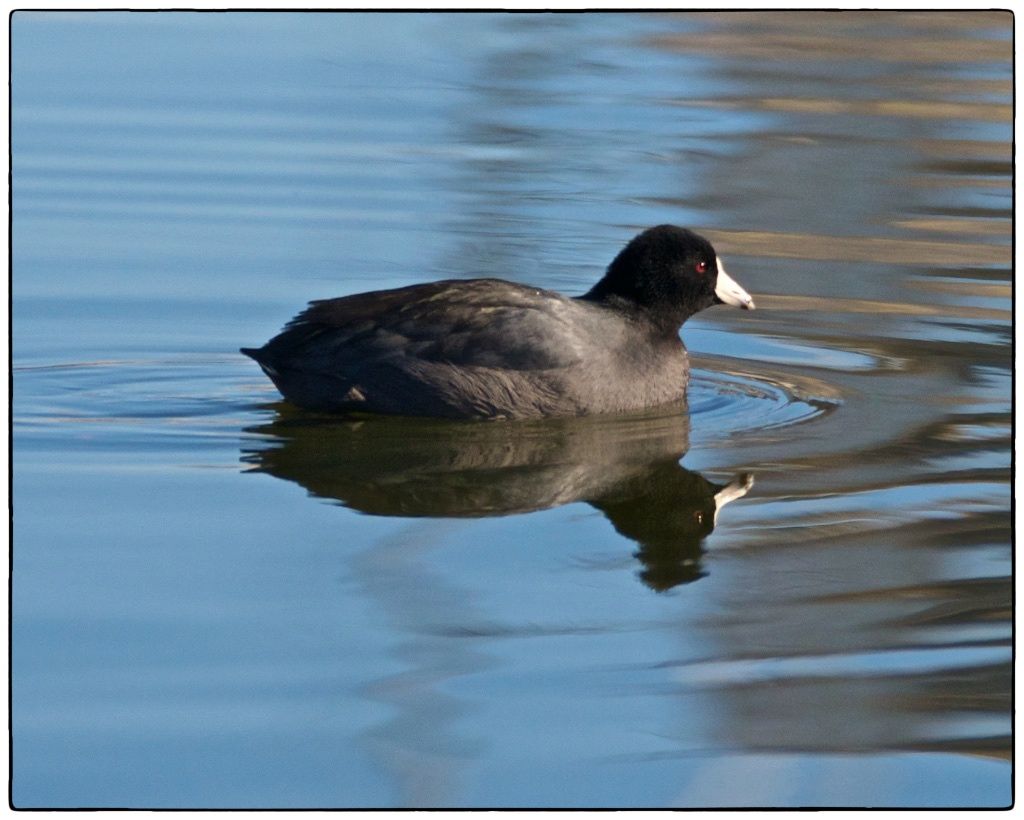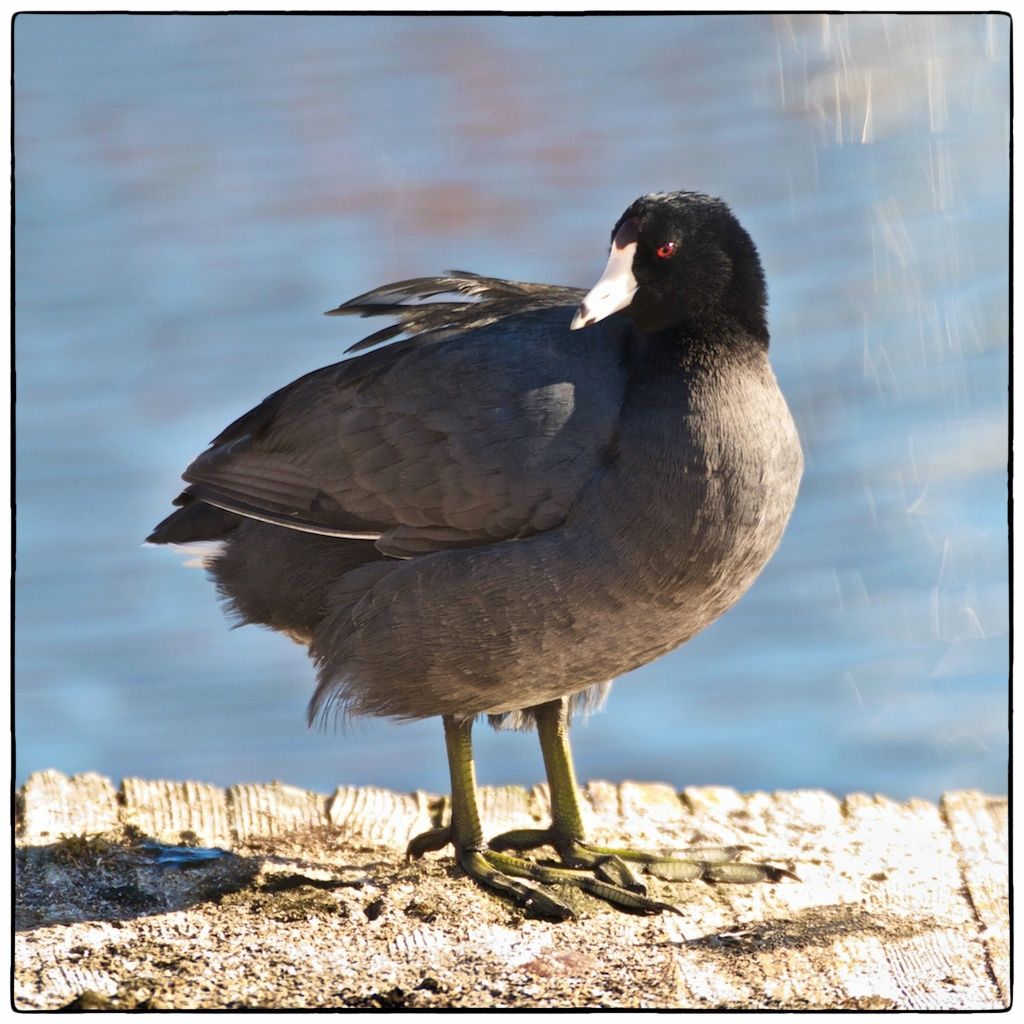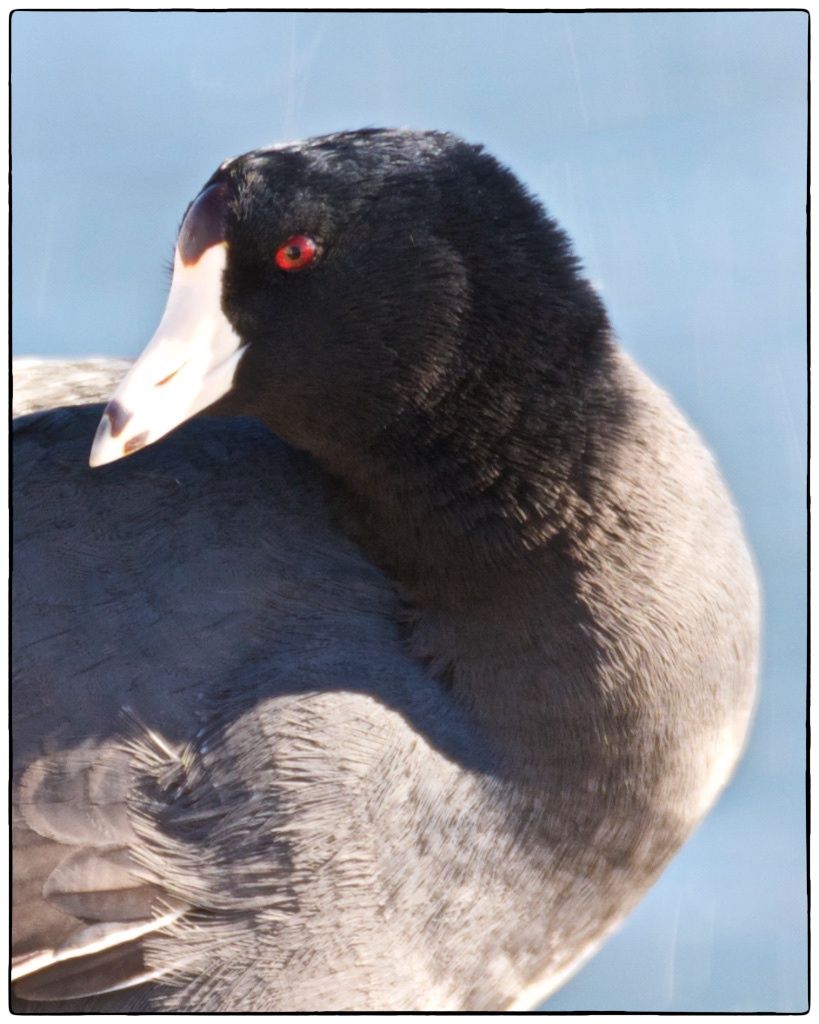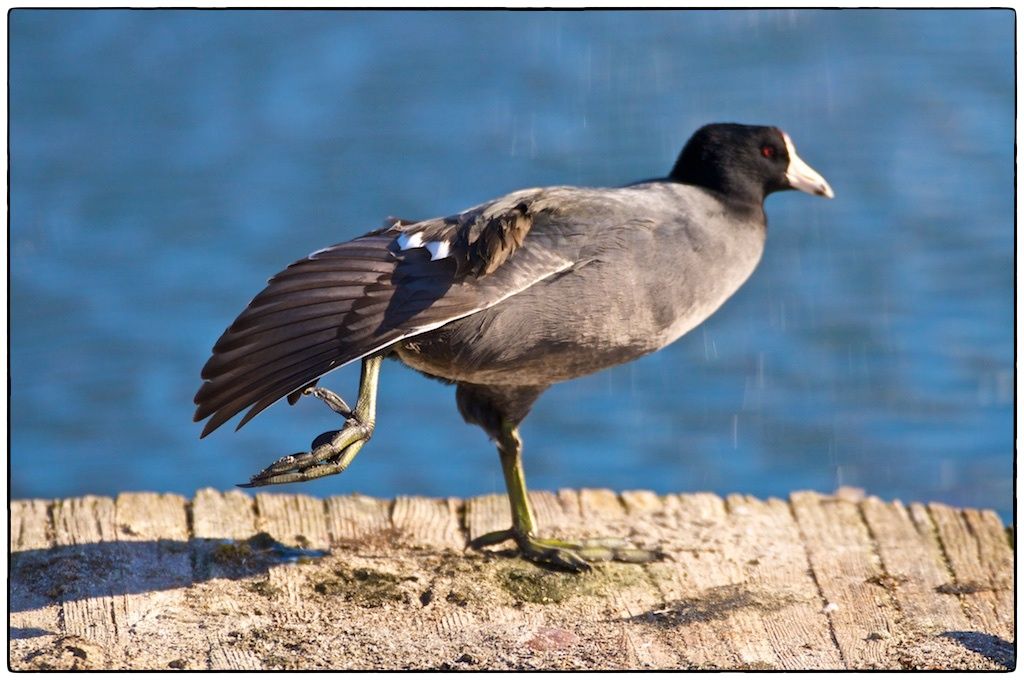Coots
--Blogpost written by Bob
I have seen coots (specifically American coots) previously in Annapolis at the mouth of the Severn River during the winter but I never got close to any. When we moved to Canton, coots became a regular sight, at least in the late fall and winter while we've been here. The coots that we see in this area during the winter probably spend their summers in eastern Canada as they are known to migrate to find more temperate climate for the winter--maybe to just find ice-free bodies of water. They are regularly seen at this time of year in the water between the marina's piers along with dozens of ducks and hundreds of seagulls.
 |
| Typically a coot will be seen lazily swimming along in the marina. When a coot swims more briskly they cock their head like a pigeon does when it walks. Once in a while we see them dive for food. |
I had to look up information online to learn more about these unique wild birds. The following information is from All About Birds:
Habitat
"The American Coot inhabits a wide variety of freshwater wetlands from prairie potholes to swamps and marshes to suburban park and sewage ponds to the edges of large lakes. Two features generally characterize all bodies of water where coots breed: (1) heavy stands of emergent aquatic vegetation along at least some portion of the shoreline and (2) at least some depth of standing water within those stands of vegetation."
Behavior
"A slow and meticulous forager, the American Coot plucks at plants while walking, swimming, dabbling with its head just underwater, or in full dives. In flight coots are clumsy and labored (though less so than Common Moorhens). To get airborne, coots typically have to beat their wings while running across the water for many yards. Coots sometimes gather in winter flocks of several thousand, sometimes mixing with other waterfowl."
They have a distinct "chirp"--once you hear it, it is very recognizable.
They have a distinct "chirp"--once you hear it, it is very recognizable.
Food
Coots eat mainly "aquatic plants including algae, duckweed, eelgrass, wild rice, sedges, hydrilla, wild celery, waterlilies, cattails, water milfoil. When on land they also pick at terrestrial plants and sometimes eat grains or leaves of oak, elm, and cypress trees. However, they are not exclusively vegetarian. You may also see them eating insects (beetles, dragonflies, and others), crustaceans, snails, and small vertebrates such as tadpoles and salamanders. They sometimes steal food from others including ducks."
I tried to feed them lettuce leaves to entice them to come a little closer but I didn't get a lot of interest. I've spent some time photographing them from the marina's piers. Fortunately, it was a warm sunny day and they were sunbathing on the finger piers.
 |
| A coot is about two-thirds the size of a mallard--about the same size and shape as a chicken.. |
 |
| This coot was getting ready to jump into the water because I was getting a little too close for his/her comfort. |
Summary
Apparently, the coots are just here for the winter and in the spring they will head north to eastern Canada to breed. We'll enjoy their company while they are here.
Thanks for following our blog!


No comments:
Post a Comment